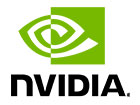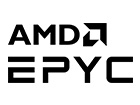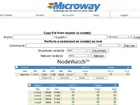-
Archives
- June 2020
- May 2020
- March 2020
- August 2019
- June 2019
- April 2019
- March 2019
- May 2018
- April 2018
- October 2017
- September 2017
- July 2017
- April 2017
- February 2017
- January 2017
- December 2016
- August 2016
- July 2016
- June 2016
- April 2016
- March 2016
- February 2016
- January 2016
- October 2015
- September 2015
- July 2015
- June 2015
- May 2015
- April 2015
- November 2014
- October 2014
- September 2014
- June 2014
- May 2014
- April 2014
- March 2014
- February 2014
- January 2014
- December 2013
- November 2013
- October 2013
- September 2013
- August 2013
- July 2013
- June 2013
- April 2013
- March 2013
- February 2013
- January 2013
- September 2012
- May 2012
- April 2012
- January 2012
- December 2011
- September 2011
- August 2011
- July 2011
-
Meta
Category Archives: Development
What Can You Do with a $15k NVIDIA Data Science Workstation? – Change Healthcare Data Science
NVIDIA’s Data Science Workstation Platform is designed to bring the power of accelerated computing to a broad set of data science workflows. Recently, we found out what happens when you lend a talented data scientist (with a serious appetite for … Continue reading
One-shot Learning Methods Applied to Drug Discovery with DeepChem
Experimental data sets for drug discovery are sometimes limited in size, due to the difficulty of gathering this type of data. Drug discovery data sets are expensive to obtain, and some are the result of clinical trials, which might not … Continue reading
DeepChem – a Deep Learning Framework for Drug Discovery
A powerful new open source deep learning framework for drug discovery is now available for public download on github. This new framework, called DeepChem, is python-based, and offers a feature-rich set of functionality for applying deep learning to problems in … Continue reading
Deep Learning Applications in Science and Engineering
Over the past decade, and particularly over the past several years, Deep learning applications have been developed for a wide range of scientific and engineering problems. For example, deep learning methods have recently increased the level of significance of the … Continue reading
Accelerating Code with OpenACC and the NVIDIA Visual Profiler
Comprised of a set of compiler directives, OpenACC was created to accelerate code using the many streaming multiprocessors (SM) present on a GPU. Similar to how OpenMP is used for accelerating code on multicore CPUs, OpenACC can accelerate code on … Continue reading
AVX2 Optimization and Haswell-EP (Xeon E5-2600v3) CPU Features
We’re very excited to be delivering systems with the new Xeon E5-2600v3 and E5-1600v3 CPUs. If you are the type who loves microarchitecture details and compiler optimization, there’s a lot to gain. If you haven’t explored the latest techniques and … Continue reading
CUB in Action – some simple examples using the CUB template library
In my previous post, I presented a brief introduction to the CUB library of CUDA primitives written by Duane Merrill of NVIDIA. CUB provides a set of highly-configurable software components, which include warp- and block-level kernel components as well as … Continue reading
Introducing CUDA UnBound (CUB)
CUB – a configurable C++ template library of high-performance CUDA primitives Each new generation of NVIDIA GPUs brings with it a dramatic increase in compute power and the pace of development over the past several years has been rapid. The … Continue reading
CUDA Code Migration (Fermi to Kepler Architecture) on Tesla GPUs
The debut of NVIDIA’s Kepler architecture in 2012 marked a significant milestone in the evolution of general-purpose GPU computing. In particular, Kepler GK110 (compute capability 3.5) brought unrivaled compute power and introduced a number of new features to enhance GPU … Continue reading
Avoiding GPU Memory Performance Bottlenecks
This post is Topic #3 (post 3) in our series Parallel Code: Maximizing your Performance Potential. Many applications contain algorithms which make use of multi-dimensional arrays (or matrices). For cases where threads need to index the higher dimensions of the … Continue reading














